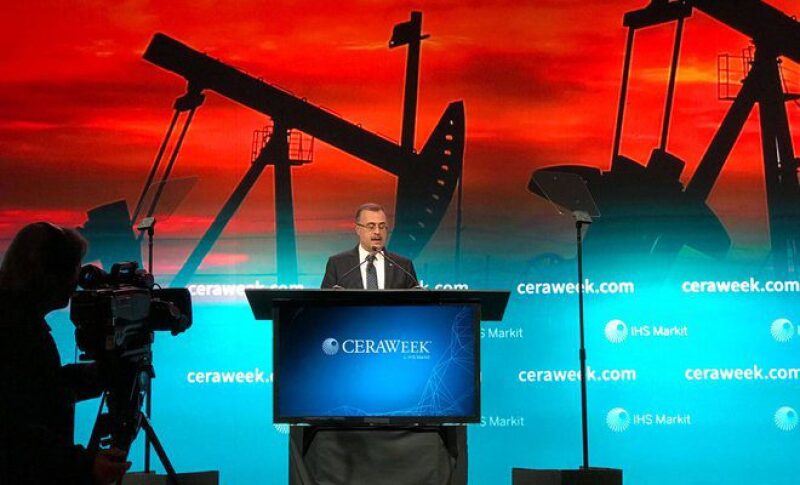The recently held CERAWeek conference in Houston brought together top executives of the oil and gas industry and provided insight into the global and regional energy future by addressing key issues such as geopolitics, technology, and cyber risks. Two young professionals from the industry who participated in the event’s Future Energy Leaders program share their takeaways with TWA.
Sahar Mouallem, Baker Hughes, a GE company
What I learned as a CERAWeek 2018 Future Energy Leader
CERAWEEK? Just another conference I thought, but I was proven wrong. It was a gathering of the minds, the who’s who in the energy industry, political leaders, and key influencers, and decision makers driving a global discussion on the current state of the industry and the future ahead. Each day focused on a different aspect of energy, whether it was about oil, gas, or power and transportation, all were tied by technology and the impact that has on each one.
I was one of BHGE’s two selections to represent our company in CERA Future Energy Leader. Important to note as well, especially given we celebrated the International Women’s Day recently, is that out of 100 Future Leaders this year, one-third were women—the most ever for the CERA Future Leader program.
As I reflect on my time at CERA, I noticed some of the common themes revolved around technology, hydrocarbon demand, and infrastructure investment. Here are my thoughts on each:
Infrastructure investment: Investment in the oil and gas industry globally is not enough to meet the growth demand in the upcoming years. Figures in the trillions of dollars have been estimated as required to be able to set up an infrastructure that can handle and meet the demand.
Hydrocarbon demand: More oil is needed to offset production from developed fields and meet the growing demand. Oil demand is about to break historic records of 100 million B/D, with Asia being the major source of this growth. Worth noting is that the transportation sector in China and India will be in critical need of oil even though electric vehicles are becoming more popular.
Technology and innovation: These are key for the continued growth and evolving success of the industry. Being a major enabler in the industry, technology is being used and implemented by all to a different extent. Some are so far advanced as having a business function focusing on digitization and artificial intelligence to become more efficient, effective, connected, and make decisions faster while some are just starting to dabble in it. Many of the E&Ps have research and development efforts ongoing that will allow for improvements in the discovery and recovery processes of hydrocarbons, lower carbon footprints, and exploring nonmetallic applications.
The global energy landscape is moving faster than any other market and the world is rapidly changing and evolving around us, so we either sit on the sideline and watch it go by or join in and become part of the change.
CERAWeek was an influential, educational, and inspiring experience. It gives a chance to step away from the day-to-day firefighting and put everything into perspective for a more out-of-the-box and long-term strategic approach.

I had the privilege to attend CERAWeek 2018—a world-renowned energy conference, thanks to a nomination by the James A. Baker III Institute for Public Policy—Rice University to the Future Energy Leaders cohort. While takeaways are too many to list, there’s one that stood out to me and, judging by a spontaneous applause, to many others.
During the ministerial panel with the Secretary General of OPEC and energy ministers of Kuwait, Ecuador, Equatorial Guinea, Kazakhstan, and Qatar, OPEC’s Barkindo shared his views on climate change and actions that OPEC members are taking to reduce its impact.
To simplify and paraphrase, the message was as follows:
1) OPEC recognizes that climate change is real and caused by increased energy consumption over the last decades/century.
2) While the energy industry shall not be blamed for the climate change, it’s in industry's (and the world’s) best interest to find solutions to this global problem.
3) OPEC member countries are making material investments in renewables and climate change mitigation technologies (internal combustion engine improvements; carbon capture, utilization, and storage, etc.)
Note: All views expressed are my own.

